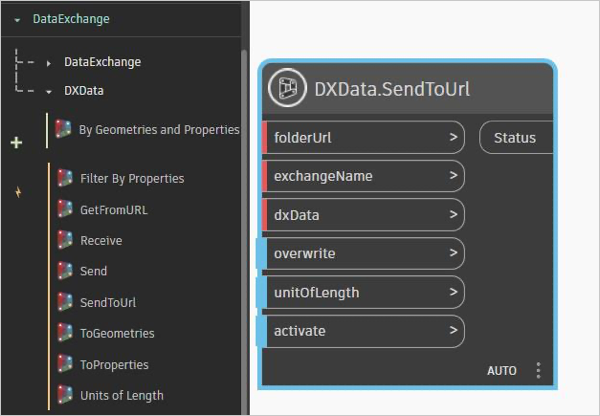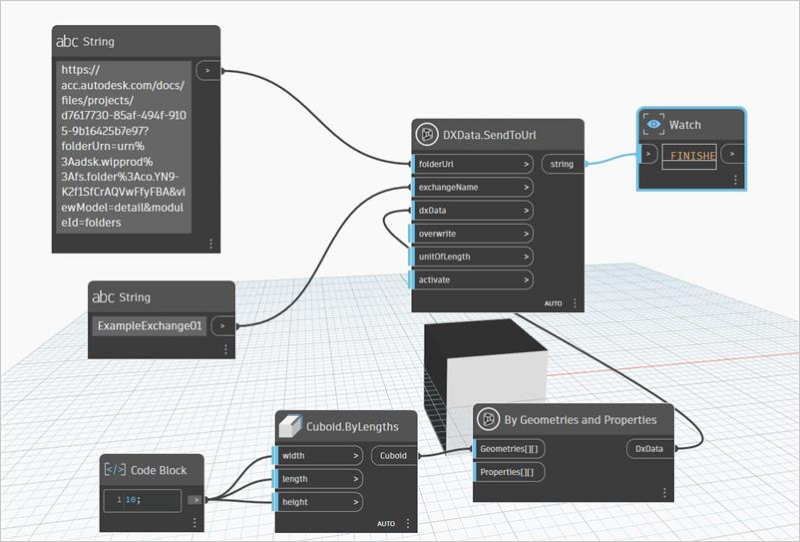DXData
Receive
This node is used to receive or load Data Exchange from Autodesk Docs. This node takes the Data Exchange object as an input and provides DXData object as an output.
| Supported Input Type | Expected Output |
|---|---|
| Data Exchange as an object. | DXData as an object. |
Click the Receive node from the library.
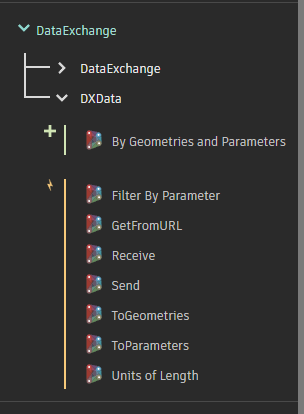
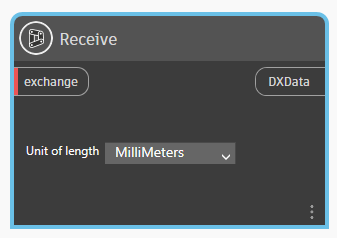
In the Get Exchange node click Load to load the Data Exchange from Autodesk Docs. Connect the input of the Receive node with the output of the Get Exchange node.
Connect the output of the Receive node to the input of the Watch node to view the DXData as an object.

GetFromURL
This node takes exchangeUrl, unitOfLength, and activate (bool) as inputs to retrieve dxData. The unitOfLength and activate inputs are optional.
| Supported Input Type | Expected Output |
|---|---|
| exchangeUrl | dxData |
| unitOfLength | exchange |
| activate | status |
Click on GetFromURL node from library.
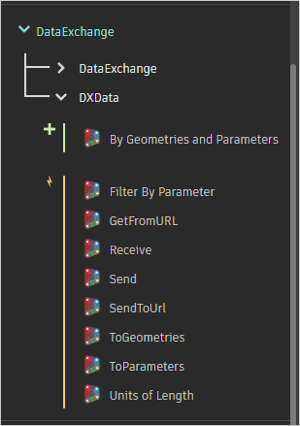
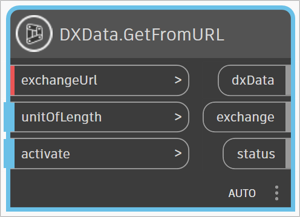
Connect the Exchange URL (a string value) to the exchangeUrl port of the DXData.GetFromURL node.
Optionally, select a unit of length from the Units of Length node and connect it to the unitOfLength port of the DXData.GetFromURL node.
Provide a true or false value to the activate port of the DXData.GetFromURL node to trigger the operation.
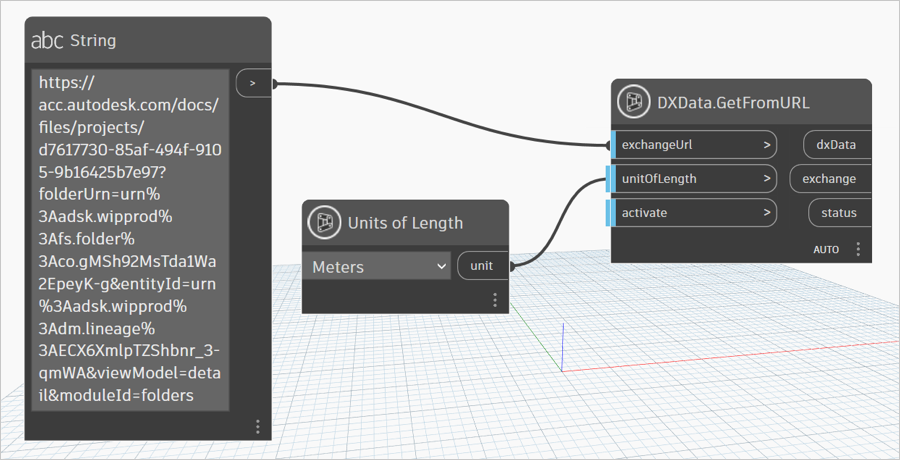
This setup ensures the DXData.GetFromURL node retrieves data from the specified URL with the chosen unit of length and activation status.
Units of Length
This node is used to specify the units for the GetFromURL node. It provides a dropdown menu that allows you to select your preferred units.
| Supported Input Type | Expected Output |
|---|---|
| Units From Dropdown | Units of Length |
Click on Units of Length node from library.
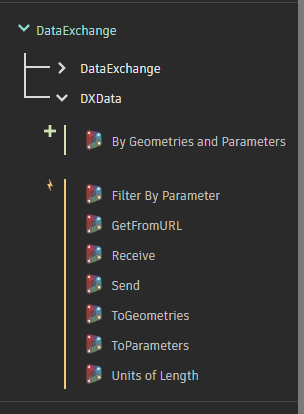
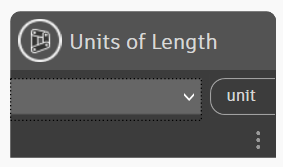
Click on the dropdown menu of the Units of Length node, and select the desired unit. The selected unit will be the output of the node.
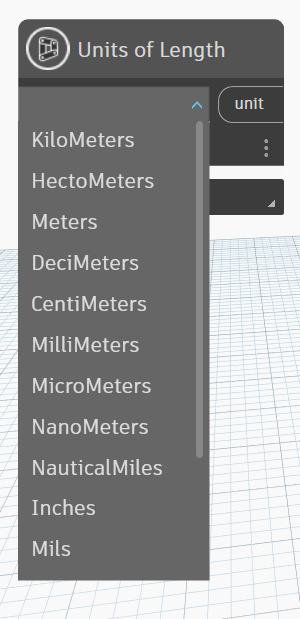
ToGeometries
This node processes the DXData object and provides a List of lists of Data Exchange geometries in the output.
| Supported Input Type | Expected Output |
|---|---|
| DXData as an object. | List containing lists of Data Exchange Geometries. |
List of Lists of Data Exchange Geometries.
Click ToGeometries node from the library.
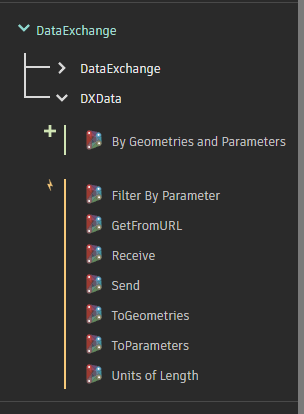
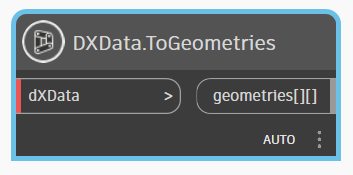
Connect the input of the ToGeometries node with the output of Receive node.
Connect the output of ToGeometries to the input of the Watch node to view the List of lists of Data Exchange Geometries.

ToParameters
This node processes the DXData object and provides a list of lists of Data Exchange parameters in the output.
| Supported Input Type | Expected Output |
|---|---|
| DXData as an object. | List containing lists of Data Exchange Parameters. |
Parameters from DXData as List of Lists.
Click the ToParameters node from the library.
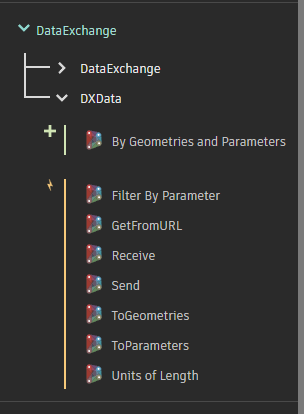
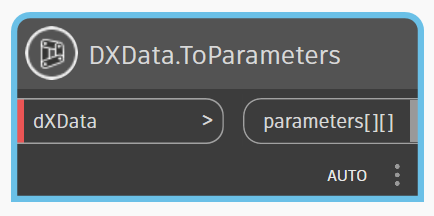
Connect the input of ToParameters node with the output of Receive node.
Connect the output of the ToParameters node to the input of the Watch node to view the List that consists of a List containing lists of Data Exchange parameters.

Filter By Parameter
This node is used to filter the required data from the DXData object. It takes DXData object, parameter name, and parameter value as input and provides filtered Data Exchange data as an object in the output.
| Supported Input Type | Expected Output |
|---|---|
| DXData as an object. | DxData as object. |
| Parameter’s Name as a list to filter. | |
| Parameter’s Value as a list to filter. |
Click the Filter By Parameter node from the library.
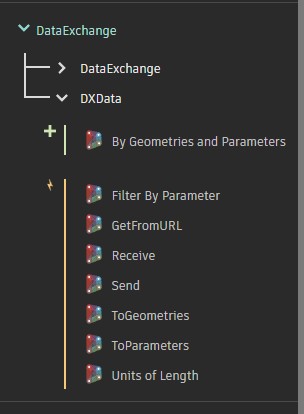

Connect the input of the Filter By Parameter node to the output of Receive node.
Select the Parameter Name and Parameter Value from the drop-down and click Add.
Connect the output of the Filter By Parameter node to the input of the Watch node to view the Filtered Data Exchange data as an object. This object will contain information about filtered geometries and parameters of the Data Exchange.

Connect the input of the ConvertToGeometries node to the output of the Filter By Parameter node.
Connect the output of the ConvertToGeometries node to the input of the Watch node to view the List containing lists of filtered geometries of the Data Exchange.

Connect the input of ConvertToGeometries and ConvertToParameters nodes with the output of Filter by parameter node.
Connect the output of the ConvertToParameters and ConvertToGeometries node to the input of the Watch node to view the List containing lists of filtered parameters and geometries of the Data Exchange.

By Geometries and Parameters
This node is used to extract the geometry data of a Data Exchange. It takes the list containing lists of Geometries as input and converts it to DxData object containing the geometry information.
| Supported Input Type | Expected Output |
|---|---|
| List containing lists of Geometries. | DxData as object. |
Click the By Geometries and Parameters node from the library.
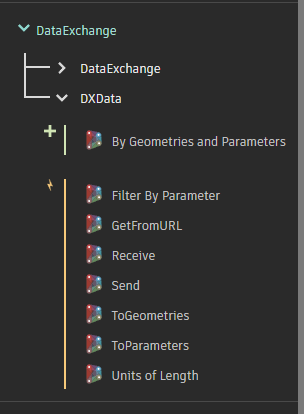
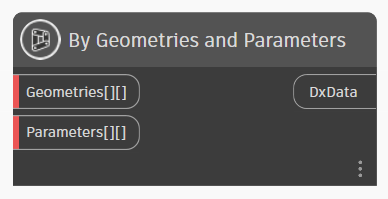
Connect the input of By Geometries and Parameters to the output of ToGeometries node.
Connect the output of By Geometries and Parameters node to the input of watch to view the DxData as an object.

Send
This node takes the Data Exchange object and DXData as input and provides the Status of whether the Data Exchange is created in the output.
| Supported Input Type | Expected Output |
|---|---|
| Data Exchange object. | DxData as object. |
| DXData as Object. |
Click the Send node from the library.
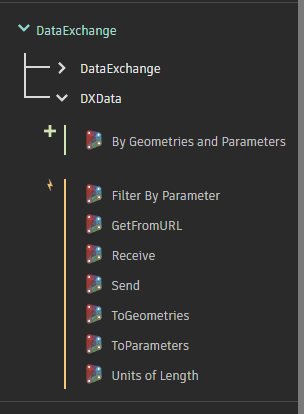
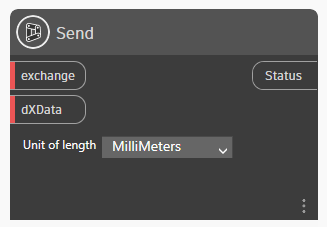
Connect the output of the GetExchange node to the Exchange input port of the Send node.
Connect the output of ByGeometryParameters node to the DXData input port of Send node and click the Send button.
Connect the output of the Send node to the Watch to view the Data Exchange Status.
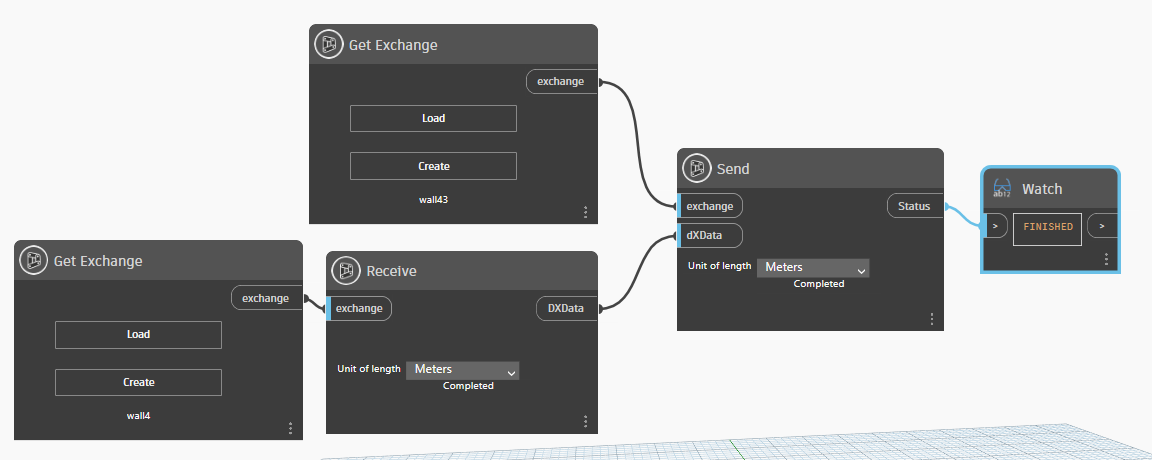
SendToUrl
This node sends DXData to a specified ACC folder URL under a given Exchange name. It provides the Status of whether the Data Exchange is successfully created or updated at the URL.
| Supported Input Type | Expected Output |
|---|---|
| FolderUrl: Target folder URL in ACC | Status of Data Exchange creation. |
| exchangeName: Name of Data Exchange | |
| dxData: Geometry and properties object | |
| overwrite: Replace existing data if true | |
| unitOfLength: Measurement unit | |
| activate: Activate exchange immediately |
Click the DXData.SendToUrl node from the library.
Connect the folder URL string to the folderUrl input port.
Connect the exchange name string to the exchangeName input port.
Connect the By Geometries and Properties node output to the dxData input port.
Optionally, set overwrite, unitOfLength, and activate inputs as needed.
Connect the output of the DXData.SendToUrl node to a Watch node to view the Data Exchange status.
